There is a particular type of diamond that holds widespread recognition and has become iconic, even in the realm of movies. It’s none other than the emerald cut diamond, a diamond shape that is easily identifiable across the globe.
The emerald cut diamond possesses remarkable characteristics, including its distinctive cut and compatibility with various settings. Its enduring popularity over the years is a testament to the many factors that make it highly sought after.
In this article, we will delve into the following aspects of emerald cut diamonds:
- Understanding emerald-cut diamonds
- Optimal settings for emerald-cut diamonds
- The significance of cut quality
- Examining the clarity of emerald-cut diamonds
- Exploring the color considerations for emerald-cut diamonds
With a clear outline of what lies ahead, let us delve into this article and discover the exceptional allure of emerald-cut diamonds.
DESIGN YOUR OWN ENGAGEMENT RING: START WITH A SETTING OR START WITH A DIAMOND. IT’S REALLY UP TO YOU!
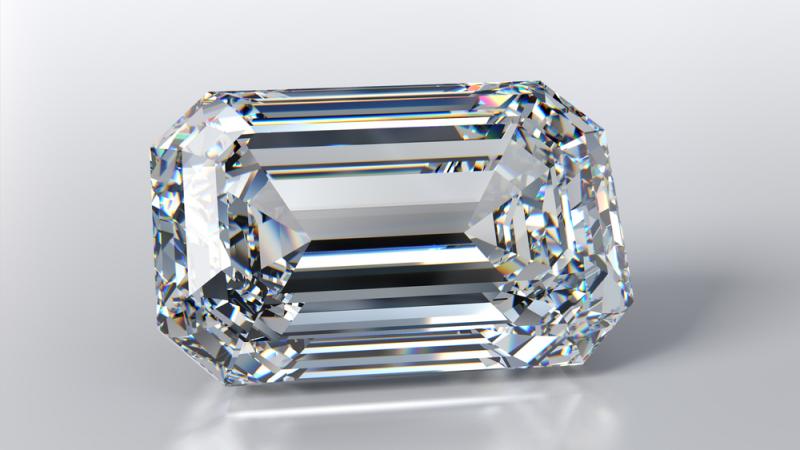
What Are Emerald Cut Diamonds?
The emerald cut derived its name from its initial use on emeralds, as they required a specific cutting technique to accommodate their fragile nature. Emerald gemstones are softer and more prone to inclusions compared to diamonds.
During the 1500s, artisans developed the step-cut facet pattern to protect emeralds from breakage and chipping during the cutting process, eventually becoming the standard for this gemstone.
Interestingly, diamond cutters soon realized that diamonds also exhibited a stunning appearance when cut in the emerald style. This gave rise to the emerald cut diamond, which is one of the oldest diamond cuts in existence. Diamonds had only recently arrived in Europe when the emerald cut was conceived.
This historical background adds to the allure of the emerald cut, as it carries with it the stories of its ancient origins. An emerald-cut diamond features a rectangular shape with cut corners and step-cut facets, resulting in a mesmerizing “hall of mirrors” effect.
Depending on the diamond’s ratio and the preferences of the cutter or customer, emerald-cut diamonds can appear elongated or more square in shape.
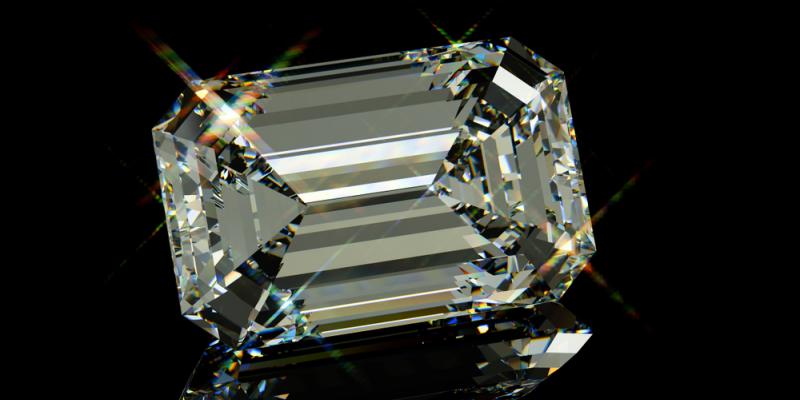
Best Settings For Emerald Cut Diamonds
Not all diamonds exhibit the same appearance in every setting. In fact, the truth is quite the opposite. Different cuts of diamonds work best with specific settings, although this may seem obvious to some, it often gets overlooked.
This oversight can result in a mismatched combination of diamond cut and setting, detracting from the overall design potential. That’s why we’re here to enlighten you about the three best settings for emerald-cut diamonds, which are as follows:
- Three Stone Setting: Emerald-cut diamonds shine beautifully in a three-stone setting. Two smaller stones flanking the emerald-cut diamond draw attention to the center stone and enhance its beauty. For example, brilliant-cut diamonds on each side create a stunning contrast with the emerald cut’s elongated facets. Another option is to pair the emerald cut diamond with baguette diamonds.
- Pavé Setting: A pavé setting can make your ring truly stand out while still allowing the emerald-cut diamond to be the centerpiece. The accent diamonds add a touch of glamour to the ring, amplifying the fire of the center stone. The pavé setting is known for its ability to complement a beautiful centerpiece diamond, as long as the diamond itself has the ability to stand out and allow the smaller diamonds to do their job.
- Solitaire Setting: The solitaire setting is a classic and widely recognized diamond setting. It emphasizes a minimalist approach, allowing the diamond to take center stage. In the case of an emerald-cut diamond, the solitaire setting enables ample light to hit the stone, enhancing its “hall of mirrors” effect. It highlights the unique style of the emerald-cut diamond exceptionally well. You can hardly go wrong with a simple solitaire setting paired with a beautiful emerald-cut diamond.
By choosing one of these three settings, you can enhance the beauty and visual impact of your emerald-cut diamond.
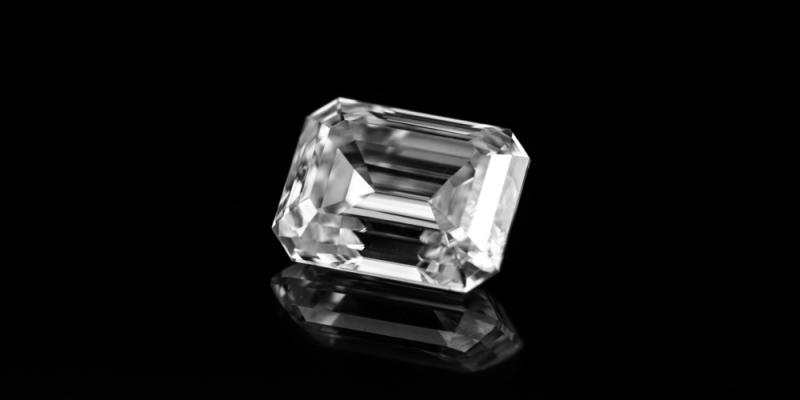
The Cut Quality
Every diamond cut possesses unique characteristics that set it apart and make it fascinating in its own way. The emerald cut, in particular, has gained significant popularity due to its distinctiveness among other diamond cuts.
Assessing the cut quality of an emerald-cut diamond can be a bit more challenging since there isn’t a specific cut grade for fancy-shaped diamonds provided by lab entities, including GIA. However, there are still key parameters that can help in selecting an emerald-cut diamond.
Dimensions such as depth percentage, table percentage, and length-to-width ratios play a crucial role in determining the diamond’s appearance and how it reflects light.
For a well-cut emerald-cut diamond, the depth percentage should be below 74%. These diamonds can vary from almost square to narrow rectangle shapes. The “classic” emerald cut diamond typically has a length-to-width ratio of around 1.50.
If you prefer the look of a square emerald-cut diamond, you may also consider the Asscher cut. The Asscher cut is one of the oldest and most well-known diamond cuts, defined by GIA as a square-cut emerald.
By considering these factors, you can make an informed choice and appreciate the unique qualities of the emerald cut diamond’s cut quality.
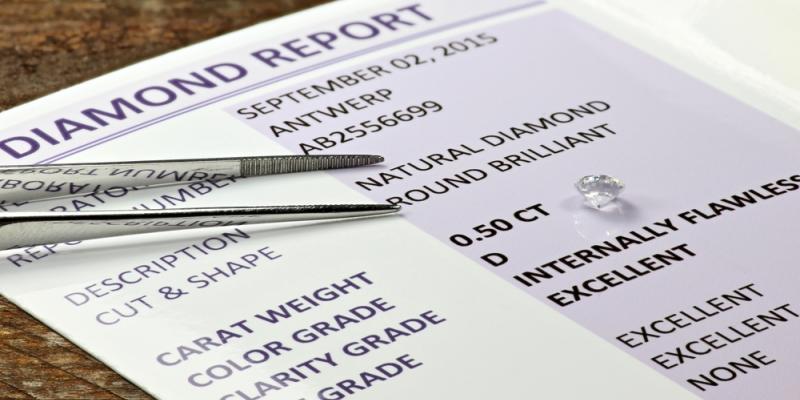
Clarity
The clarity of a diamond is always a sensitive topic, as diamonds of various clarity levels can be found in any specific cut, including the emerald cut.
This means that emerald cut diamonds can have a wide range of clarity grades, independent of their cut. Therefore, there is a market for diamonds with both lower and higher clarity grades.
However, let’s focus specifically on the clarity of emerald cut diamonds. The top surface or table of an emerald cut diamond resembles a window into its depths. Due to the relatively shallow pavilion and crown, any inconsistencies or blemishes in the diamond will be more noticeable compared to other cuts.
The Gemological Institute of America (GIA) provides a clarity scale for gemstones ranging from the best (void of inclusions) to the worst (easily noticeable inclusions). The designations on this scale include:
- IF (Internally Flawless)
- VVS1 (Very Very Small Inclusions 1)
- VVS2 (Very Very Small Inclusions 2)
- VS1 (Very Small Inclusions 1)
- VS2 (Very Small Inclusions 2)
- SI1 (Small Inclusions 1)
- SI2 (Small Inclusions 2)
- I1 (Inclusions 1)
- I2 (Inclusions 2)
Generally, it is recommended to aim for VS2 clarity for the best value when selecting an emerald-cut diamond. Clarity grades such as SI2 and SI1 are usually not recommended for gemstone cuts like emerald cuts.
It is essential to carefully review each diamond and ensure that it appears clean to the naked eye. Some imperfections may not be visible without magnification, meaning that the emerald-cut diamond can still be wearable despite minor flaws.
If you are considering an SI1 or SI2 emerald cut diamond, it is crucial to verify that the inclusions are not located in the center of the stone.

Color
When it comes to the color of emerald-cut diamonds, it is not as extensive a topic as clarity. However, there are a few points worth mentioning.
In general, there are one or two options to choose from when considering the color of an emerald-cut diamond. Most commonly, transparent or see-through diamonds are used for this cut. The open facets of the emerald cut allow a significant amount of light to enter, making clear and colorless diamonds a popular choice.
The vast majority, around 99%, of emerald-cut diamonds you come across will not have a specific color. This is the norm and typically what is desired. However, if you prefer a diamond that stands out with a distinct color, there are options available.
Yellow or “canary” emerald-cut diamonds are one of the more popular choices for colored diamonds. While they are not as common as colorless diamonds, with persistence, you can find them.
Purple-colored emerald-cut diamonds, on the other hand, are rare and usually not specifically cut in the emerald shape. However, if you find a diamond with the color you desire, it is possible to have it custom-cut into an emerald shape.
In reality, diamonds come in various colors, and with a decent level of clarity, any color can be custom-cut into an emerald shape. So, there is room for creativity and personal preference when it comes to diamond colors.
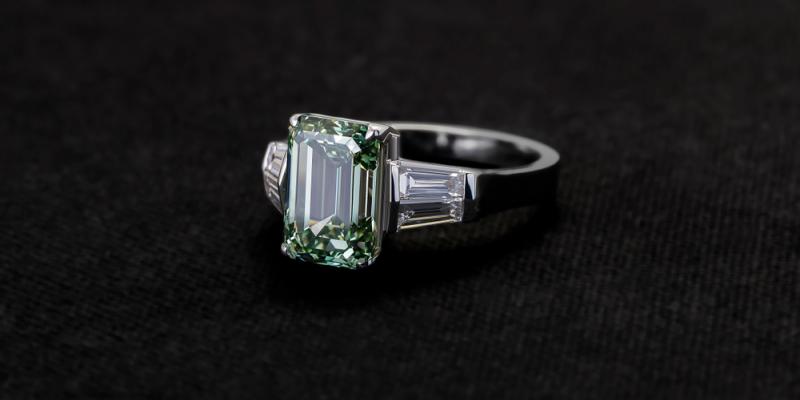
Conclusion
In summary, there are several key points to consider when deciding if the emerald-cut diamond is right for you:
- Historical Significance: Emerald-cut diamonds have a long history dating back to the 1500s, making them a popular choice even today.
- Cut Quality, Clarity, and Color: The cut quality of emerald-cut diamonds allows a lot of light to enter the stone, making imperfections more visible. It is crucial to carefully consider clarity and color when purchasing these diamonds.
- Careful Selection and Cost: Due to the visibility of imperfections, it is important to be cautious when buying emerald-cut diamonds. Additionally, the higher level of clarity needed for an impressive appearance can come with a higher price tag.
- Price Range: The price of emerald-cut diamonds typically ranges between $850 and $1300 for a half-carat stone.
With this information in mind, the next step is to try on an emerald-cut diamond and see how it looks on you. This hands-on experience will help you determine if this diamond cut suits your personal style and preferences.


